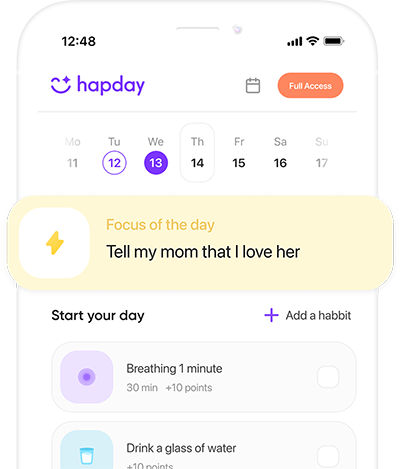Table of Contents
- What Are Sensory Sensitivities?
- Hypersensitivity
- Hyposensitivity
- The Impact of Sensory Sensitivities
- Educational Challenges
- Social Interaction
- Strategies for Managing Sensory Sensitivities
- Environmental Modifications
- Sensory Diets
- Occupational Therapy
- The Role of Caregivers and Educators
- Educating Others
- Building Support Networks
- Conclusion
What Are Sensory Sensitivities?
Sensory sensitivities, put simply, are the unusual reactions to sensory inputs—something that’s all too familiar for many on the autism spectrum. These responses dive into realms of hypersensitivity (where everything feels just…too much) or hyposensitivity (where folks may be underwhelmed by stimuli like sounds or smells). Being oversensitive can feel like an avalanche of sensations, often causing sensory overload. And let’s be real, these behaviors can appear a tad baffling to those not familiar with ASD.
Hypersensitivity
So, hypersensitivity—imagine a world where even a gentle touch sends shockwaves, or background chatter feels like a rock concert, unbearable and overwhelming. According to this study in the Journal of Autism and Developmental Disorders, a whopping 70% of folks with ASD deal with some level of sensory hyper-reactivity (Ben-Sasson et al., 2009). Yeah, that many.
Hyposensitivity
On the flip side, you’ve got hyposensitivity. Picture this: not even flinching at loud noises or constantly seeking out intense sensory activities, like spinning or diving headfirst into different textures. Why? Sometimes it’s simply about stimulating an under-responsive sensory system, at least that’s what Tomchek & Dunn said in 2007.
The Impact of Sensory Sensitivities
These sensory quirks can ripple through every aspect of life—altering behavior, muddling communication, and making social interaction a real uphill battle. Kids with ASD, in particular, find school environments tough cookies, thanks to blinding lights and deafening noises messing with their focus and learning abilities. Adults? They might just as well find specific workplaces grueling, impacting their mental health more than one might think.
Educational Challenges
In educational settings, here’s the scoop—sensory sensitivities can lead to squirmy seats, reluctance to join group shenanigans, or just plain zoning out. Ashburner et al., back in 2008, highlighted how children with ASD often need their schools to cater specifically to their sensory quirks—quiet corners and noise-canceling headphones, anyone?
Social Interaction
Now, socially, it’s a minefield. Who hasn’t been slightly overwhelmed by bright lights or overpowering perfumes? For those with ASD, however, such things can escalate to withdrawal or serious anxiety. Understanding these quirks lets friends and caregivers create havens of inclusivity, no doubt about it.
Strategies for Managing Sensory Sensitivities
Managing these sensitivities? It’s about dodging sensory overload while tackling that under-responsiveness head-on. Here are some tips that might just do the trick:
Environmental Modifications
Step one: tweak the environment. Think soft lighting, mute background noise, and schedule regular sensory breaks. There’s even a tool called the Sensory Processing Measure (SPM) designed to pinpoint those precise sensory needs (check out Parham & Ecker’s work from 2007).
Sensory Diets
Then there’s the notion of a “sensory diet”—pretty much a bespoke menu of activities guaranteed to provide the necessary sensory input to maintain focus throughout the day. Consider deep pressure movements or tactile play; it’s all tailored to the individual’s needs.
Occupational Therapy
And let’s not skip on occupational therapists. They’re vital in providing support, with tried-and-tested approaches that help individuals cope better and hone their sensory skills. Schaaf et al., in 2014, showed how OT interventions can notably boost day-to-day functionality and lessen sensory stress. Amazing, right?
The Role of Caregivers and Educators
Caregivers and educators? They’re the real MVPs in this story. A good grasp of sensory sensitivities puts them in a strong position to advocate and craft sensory-respectful environments.
Educating Others
Spreading the word about sensory quirks ensures broader understanding and acceptance. Awareness programs, even during “Autism Awareness Month,” can be such eye-openers.
Building Support Networks
But really, fostering a tight-knit support system—family, educators, therapists, peers—is essential. Swapping resources and insights helps inspire communities that genuinely back individuals with ASD across the board.
Conclusion
Wrapping it up, tapping into sensory sensitivities in ASD isn’t just essential—it’s transformative for those affected. By recognizing and adjusting to these sensory nuances, we pave the way for improved learning, better social mingling, and a well-deserved leap in overall well-being. Remember, sensory sensitivities aren’t challenges to conquer but unique experiences within the kaleidoscope of ASD.
Curious about bolstering your support for individuals with ASD? Dive into useful resources at Hapday and uncover impactful tools and strategies.
References
- Ben-Sasson, A., et al. (2009). A meta-analysis of sensory modulation symptoms in individuals with autism spectrum disorders. Journal of Autism and Developmental Disorders. Link
- Tomchek, S. D., & Dunn, W. (2007). Sensory processing in children with and without autism: A comparative study using the short sensory profile. American Journal of Occupational Therapy. Link
- Ashburner, J., et al. (2008). Brief report: Use of the classroom sensory environment by children with Asperger syndrome. Journal of Autism and Developmental Disorders. Link
- Parham, L. D., & Ecker, C. (2007). Sensory Processing Measure (SPM) manual. Western Psychological Services. Link
- Schaaf, R. C., et al. (2014). The everyday routines of families of children with autism: Examining the impact of sensory processing difficulties on the family. Autism: The International Journal of Research and Practice. Link

